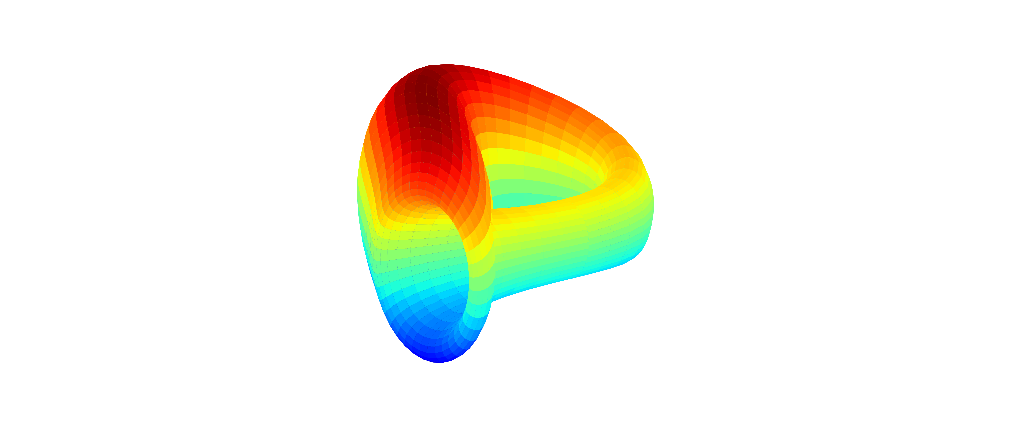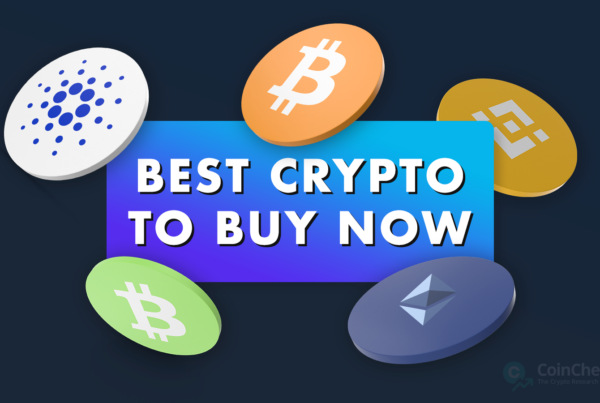The cryptocurrency market has ended Week 43 with a total market capitalization of $2.67 trillion. However, despite favourable conditions and record inflows into cryptocurrency investment products Bitcoin failed to set a new ATH price last week as it traded between $60,000 and $63,000 for most of the time. The second largest cryptocurrency, Ethereum, performed slightly better and managed to post a new ATH price of $4,453 on October 29. Do you think ETH can surge even higher this week? We sure do think so! But which other coins are worth keeping an eye on in Week 44? Find out more in the following article.

3. Curve DAO Token (CRV)
Curve is a decentralized exchange with liquidity pools built on the Ethereum blockchain. The protocol aims to provide its users a simple and easy-to-use product for swapping Ethereum-based assets with low slippage and minimal fees. Curve was developed by Russian scientist Michael Egorov. He launched Curve in January of 2020 and the platform quickly became one of the most used DEXes. The protocol uses a native token named Curve Dao Token (CRV) for decentralized governance as well as rewarding liquidity providers on CurveFinance.
CRV was one of the top performing DeFi tokens In October
Curve DAO Token (CRV), the governance token for Curve Finance, has quietly became one of the top performers among DeFi tokens in October. CRV, which is currently changing hands at a price of around $4.50 per token, has seen an 85% gain during last month. In addition, the total value locked (TVL) on Curve is almost at $20 billion. One of the key identified reasons for the rally lies in the CRV’s tokenomics. To clarify, Curve heavily incentivises users to lock their CRV on the protocol long-term and earn rewards from staking. As a result, almost 350 million CRV (more than 88% of the circulating supply), is currently locked on the Curve protocol with an average vesting time of 3.68 years, according to data provided by Curve. Another factor driving the price of CRV up is the so-called “Curve Wars”. The community forged this word to describe the practice of DeFi platforms, such as Yearn.finance, Convex Finance and Abracadabra.money, which are offering very attractive yields on CRV to try to lure in CRV holders. Once an investor decides to lock-in his CRV on these platforms, their underlying protocols will use the governance power granted by holding VeCRV to vote for a higher allocation of rewards to the liquidity pools that they are providing liquidity to. Doing so, they can maximize their yields from Curve Finance. While the competition pushes DeFi platforms to offer lucrative returns on CRV and maximize their yields, it is important to note that such buying of votes could threaten the decentralization of Curve protocol. According to Dune Analytics, Convex Finance currently controls more than 37% of Curve’s governance, so be ware who you entrust your precious CRV!

2. Decentraland (MANA)
Decentraland is a virtual reality platform powered by the Ethereum blockchain. The developers aim to provide an infrastructure to support a shared virtual world, also called a metaverse. Decentraland players can purchase and sell plots of land in the virtual world and use them to explore and even build on them. Decentraland currently uses two tokens: MANA and LAND, with MANA being the Decentraland’s native currency and main medium of exchange. MANA is an ERC-20 token that can be used to pay for a range of avatars and other products on the Decentraland marketplace.
Metaverse cryptocurrencies rally following Facebook’s rebrand to Meta
Last Thursday, Facebook founder Mark Zuckerberg made headlines by announcing that the famous social network company is changing its name. The company in charge of Facebook, Instagram, WhatsApp, and several other products changed its name to “Meta,” to emphasize the company’s vision to develop a “metaverse” of the future. Following Zuckerberg’s announcement several cryptocurrency projects focused on developing virtual worlds have garnered a lot of attention. In the 24 hours after the Facebook rebrand announcement, WEMIX (WEMIX) gained 45%, UFO gaming 25%, The Sandbox (SAND) 23%, Star Atlas (ATLAS) 22%, My Neighbor Alice (ALICE) 13%, and Axie Infinity token AXS 10%. But the biggest benefactor of this “metaverse” FOMO was Decentraland, as its currency MANA gained more than 60% on Friday October 29. The uptrend was caused by the speculation that Meta would eventually integrate NFT technology in its products and the most likely way to do this is by collaborating with one of the already established projects operating in the space. This speculation has caused the total market capitalization of metaverse tokens to grow by 13.40% on October 29 alone. While the $13 billion worth metaverse subsector is currently very prone to a correction as the market cools off a bit, the long-term trend for projects working on virtual worlds is likely to be an upward one.

1. Ethereum (ETH)
Ethereum is an open-source distributed blockchain that pioneered smart contract functionality. It operates as a decentralized virtual machine which can execute scripts. The smart contracts operate in a fast, immutable and trustless manner, while the speeds and capabilities of the Ethereum blockchain are going to further increase when Ethereum 2.0 is fully launched. Ethereum’s native asset Ether (ETH) is currently the second-largest cryptocurrency by market capitalization. Although it can also be used as a currency for transactions between different nodes, it is more commonly used to execute smart contracts. The Ethereum blockchain also hosts a number of ERC20 tokens with different utilities – these include Exchange tokens (OKB, HT, UNI), DeFi tokens (LINK, MKR, COMP, SNX, ZRX…) and several stablecoins such as USDC, DAI, TUSD, and USDT.
Altair, likely the last major upgrade before full transition to proof-of-stake, successfully deployed on October 27
On Wednesday, October 27, Ethereum 2.0 Altair Beacon Chain update has successfully rolled out. Altair is the first upgrade to the Ethereum 2.0 Beacon Chain since it went online in December 2020 and very likely also the last major upgrade before the Beacon chain merges with the Ethereum mainnet and the network changes to proof-of-stake (PoS) consensus mechanism. Among a handful of changes that increased the efficiency and tidiness of the network, Altair added support for light clients and increased the penalties for offline nodes. Ethereum developers highlighted that the merge will further increase these penalties. Just one day after the Altair deployment, more than 98.7% of nodes already upgraded. The high percentage is likely because Altair upgrade was a hard fork, which means that validator nodes who didn’t upgrade were pushed offline, and their Ether stakes will gradually diminish at a rate of around 10% per year. On the other hand, nodes who did upgrade are now one step closer to Ethereum 2.0, a drastically more scalable blockchain that promises to perform up to 100,000 transactions per second. This increase in throughput will be achieved through the implementation of shard chains and the switch from energy-hungry proof-of-work (PoW) to more efficient and less energy-consuming proof-of-stake consensus. The upgrade is expected to significantly reduce the cost of transactions and smart contract execution, thereby opening new Ethereum use cases, that are now hindered by the high costs connected with Ethereum operations. On October 29, just two days after the Altair upgrade saw the light of day, Ethereum climbed to its new ATH valuation of $4,453. The positive ETH market sentiment resembles the community’s optimism and high expectations regarding the Ethereum 2.0. Let’s hope that Ethereum 2.0 will delivers as soon as possible. The merge of the Beacon chain with Ethereum mainnet and the launch of shard chains is expected to happen in 2022.



